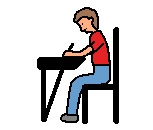Winter is almost here and we can’t stop it from coming. So, we may as well embrace it! This month, we’ve brought you some ideas for using AAC while participating in fun, winter-themed activities that can be enjoyed from the warmth of indoors!
Vocabulary suggestions for participating in Winter Activities:
What’s on your wish list?
|
More hot chocolate please!
|
I need my sweater.
|
Help me write a letter to Santa.
|
We need _____ for our snowman.
|
Happy Holidays!
|
Let’s watch a holiday movie.
|
It’s too cold! Let’s go inside.
|
Build the snow fort bigger.
|
Hooray! No school for 2 weeks.
|
Help me throw a snowball.
|
I want to catch snowflakes.
|
Apples 4 the Teacher - Fun Educational Website for Teachers and Kids
Also, using partner assisted scanning, your child can select colours to complete a picture with a virtual crayon. Several colouring pages and reading activities can be found at:
Partner Assisted Scanning is a method in which the communication partner indicates all possible choices by showing, pointing and/or speaking the names of all available items. The choices are then restated one by one, and the child confirms or rejects each item using their previously established “yes” or “no” response. Messages can often be conveyed more quickly because the physical effort required is minimized.
Here you’ll find lots of examples of activities in which your child could use a simple speech-generating device like a Step-by-Step to direct the activity. You can also register for the Rainbow Resource Room where you’ll find additional helpful resources. http://preschoolrainbow.org/preschool-winter.htm
No-Tech Ideas
Laminate symbols/vocabulary related to outdoor winter activities and attach them to your child’s coat or mittens using a rubber-coiled keychain. Don’t forget to include messages like “I’m cold”, “Let’s do it again”, “Time for some hot chocolate”, “This is so much fun!”
Light Tech Ideas
Your child could use their sequential message device to tell the class each of the steps for making a winter recipe (e.g. cookies, hot chocolate). Find some tasty recipe ideas in the Rainbow Resource Room at http://preschoolrainbow.org/join.htm.
High Tech Ideas
Use your computer to do some holiday writing. You can write a letter to Santa using IntelliTools Classroom Suite software. A template has already been created for you at aex.intellitools.com/searchdetails.php?act_key=dearsanta0







